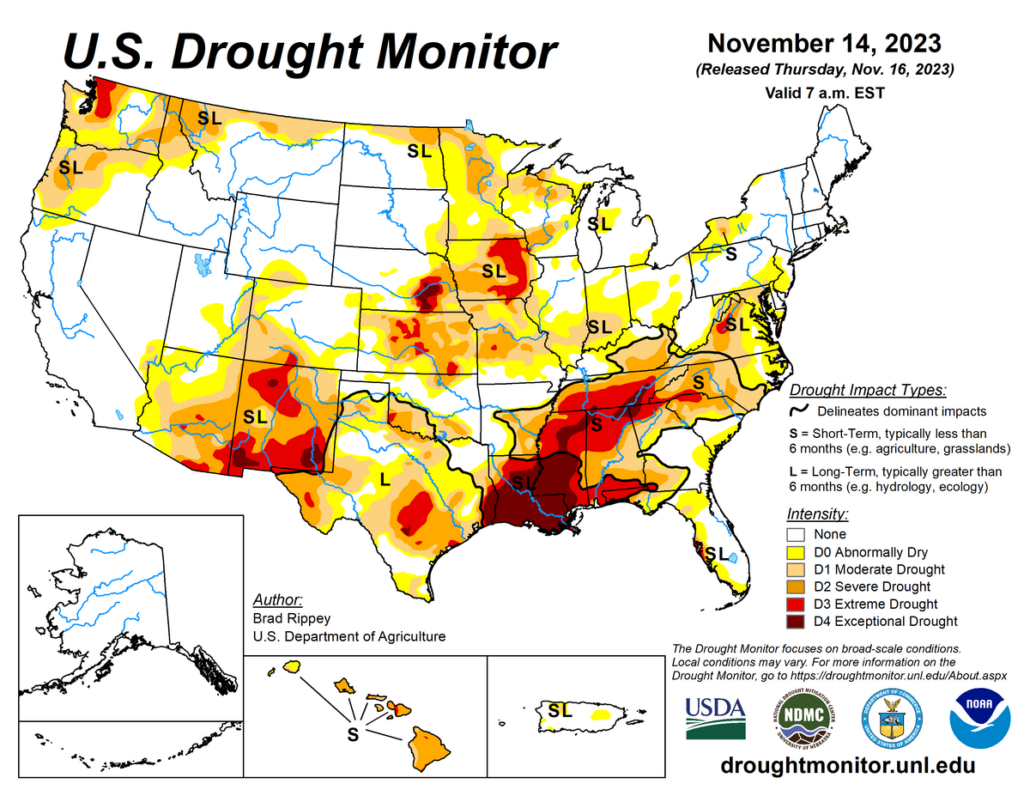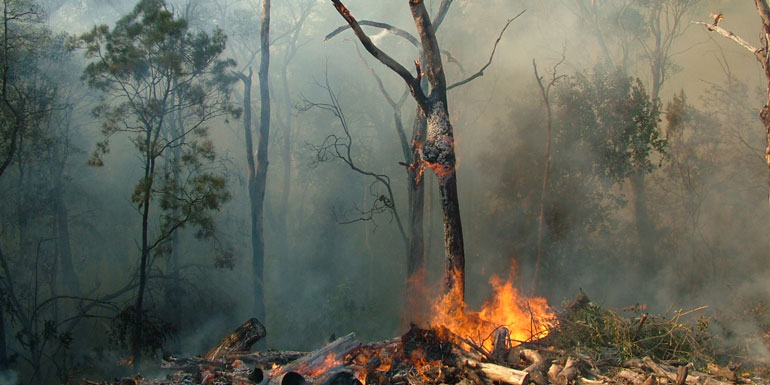As we navigate the peak of the fall fire season in the Southeastern United States, a severe and expansive wildfire threat looms, driven by a complex interplay of factors. Severe to exceptional drought has rapidly expanded across the Southern Appalachians and portions of the Piedmont in recent weeks, creating challenging conditions for containment and control efforts.
The prolonged drought has established a stronghold, reaching extreme to exceptional levels across the central Gulf states and Lower Mississippi Valley. Multiple states across the Appalachians report extended mop-up operations and patrolling for hot spots, reflecting the persistence of drought that has dried out organic surface fuels.
Difference from Normal Conditions
According to the National Interagency Coordination Center, fire danger indices have surged to levels locally comparable to the fall of 2016. The impact of 30-, 60-, and 90-day rainfall deficits below 25% of normal is evident in the critically dry 100- and 1000-hour fuels. Active torching in normally less flammable vegetation, such as Mountain Laurel and Rhododendron, adds to the challenge.
Drought’s Regional Expansion
Drought conditions have significantly expanded across the Southern Area, particularly in the Tennessee Valley and Appalachian states. Leaf drop, accelerating at higher elevations, signals the beginning of the fall fire season, with the Appalachians experiencing an uptick in fire activity. In eastern Kentucky and Virginia, persistent drought has been especially long-lived.
 Widespread Impact of Fires
Widespread Impact of Fires
The fires have spread across a vast region, affecting West Virginia, Kentucky, Tennessee, Virginia, North Carolina, and Georgia. The majority of these fires have been triggered by human activities, ranging from local burns escaping control to deliberate arson. The combination of very dry conditions and gusty winds provides a conducive environment for the rapid expansion of flames.
Virginia, North Carolina, Kentucky, and Tennessee are at the epicenter of this crisis, each facing unique challenges.
Virginia is grappling with extremely dry conditions and high winds propelling wildfires. Governor Glenn Youngkin declared a state of emergency. The 5,978-acre Matts Creek Fire is affecting air quality as far north as New York.
In western North Carolina burn bans and canceled permits in 14 counties underscore the urgency to reduce the risk of rapid fire spread. The Black Bear is currently over 1,000 acres and is threatening to spill over into Tennessee.
At one point Kentucky had over 61 active fires covering an estimated 8,800 acres. Firefighters from seven states continue to work on the 14 active wildfires.
Tennessee has battled over 30 wildfires in recent days. This is the driest period in the area since 2016, the same year the massive Chimney Tops and Gatlinburg fire occurred over Thanksgiving weekend, leaving 14 people dead and hundreds injured and displaced.
Outlook and Potential Relief
Despite the grim situation, there’s optimism for relief in December as winter conditions set in. Projections indicate that drier-than-normal weather is expected to persist for the next week or so. Additionally, there are increasing signs of a more active southern jet stream around Thanksgiving, potentially bringing much-needed precipitation. This heightened storminess is a typical consequence of the El Niño climate pattern forecasted to strengthen into the winter months.




